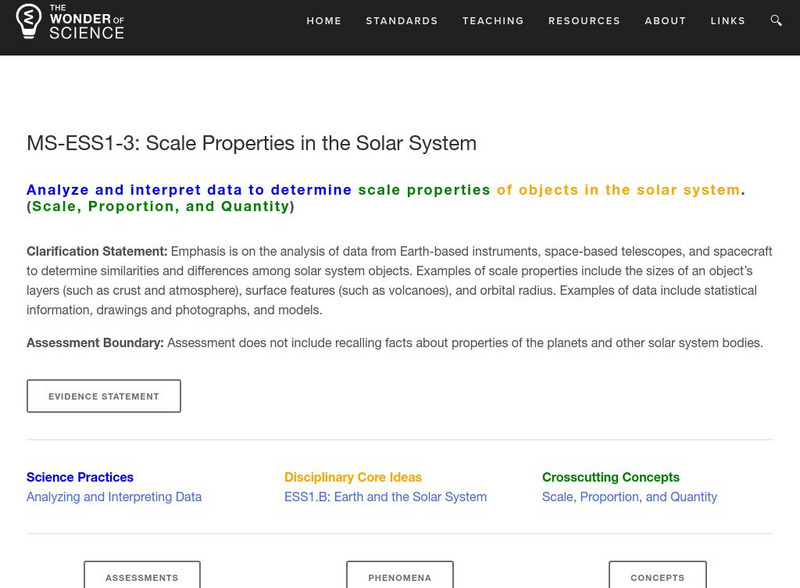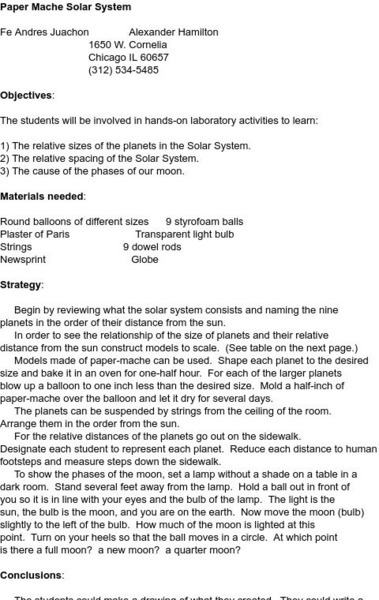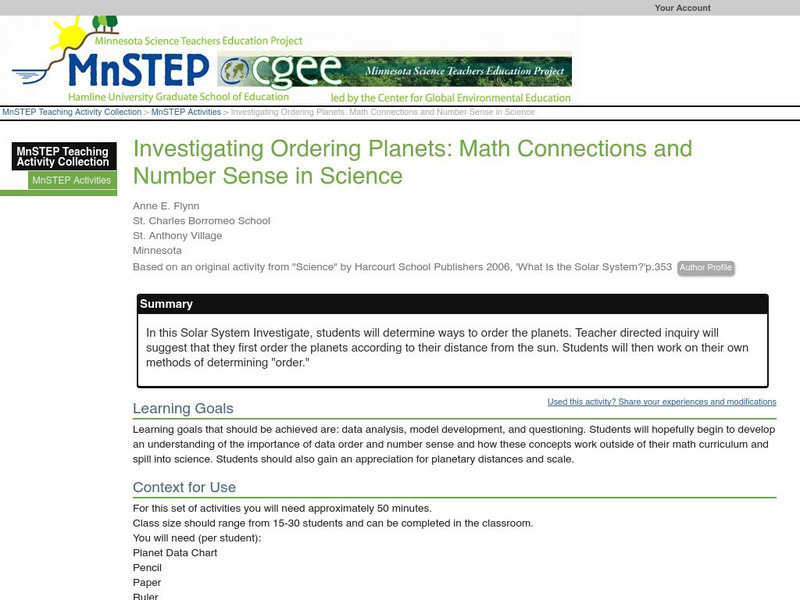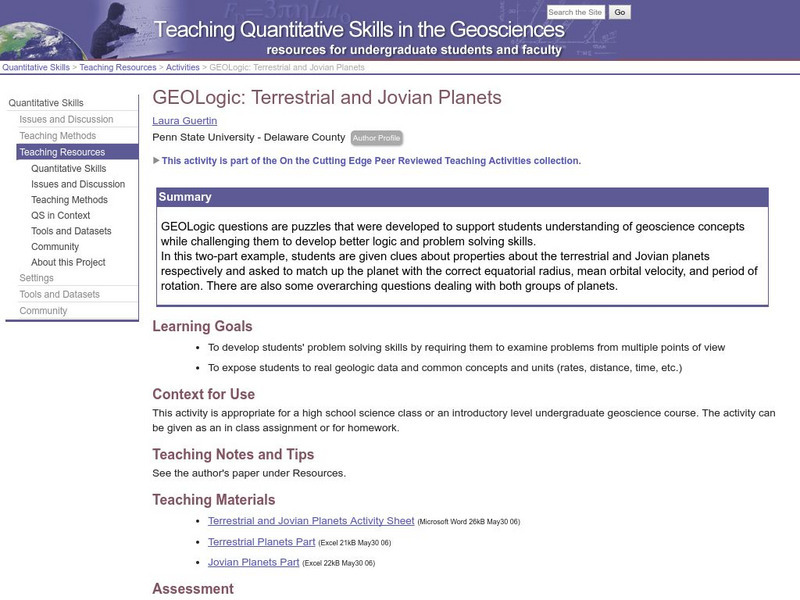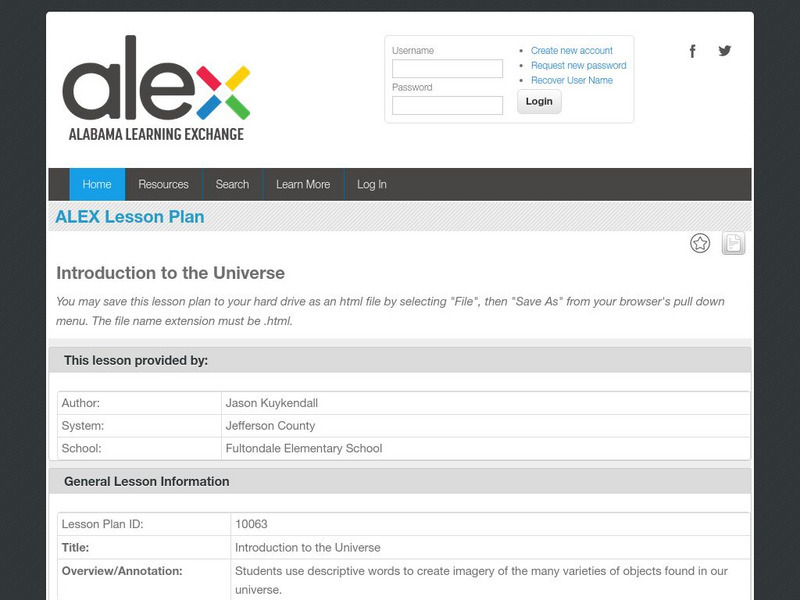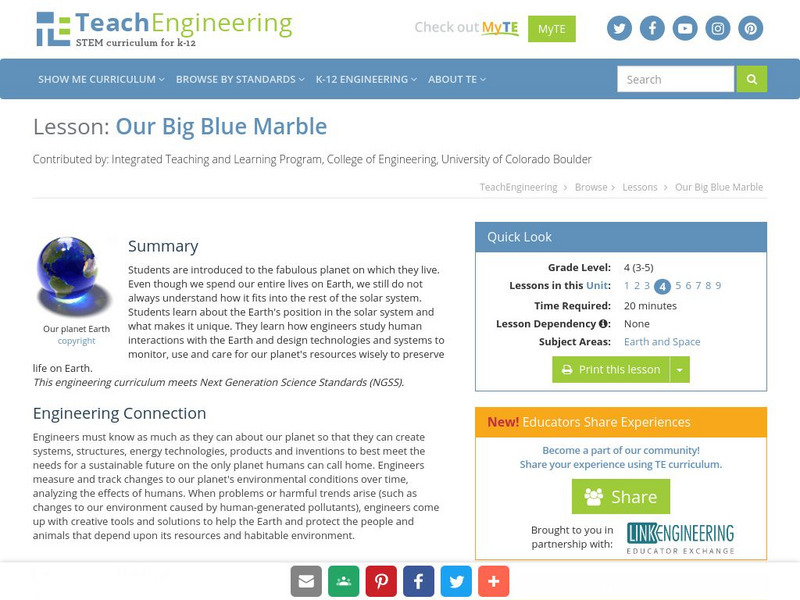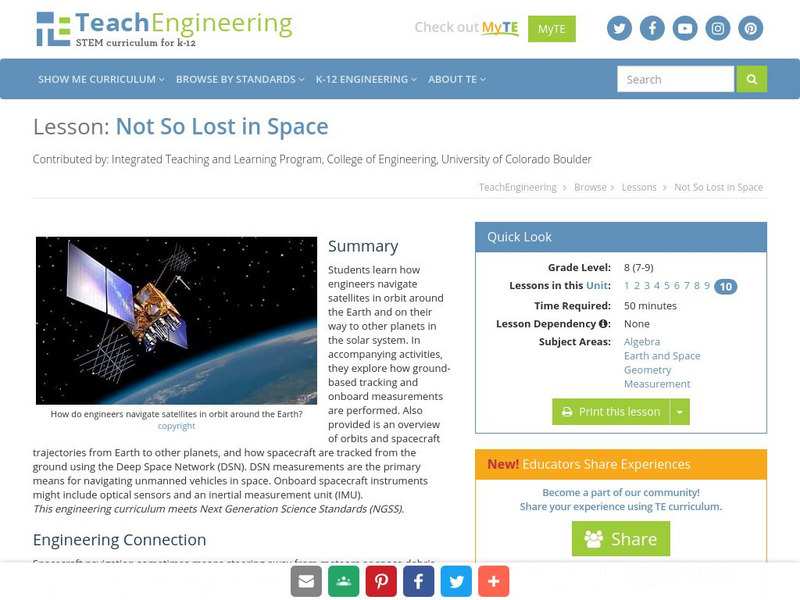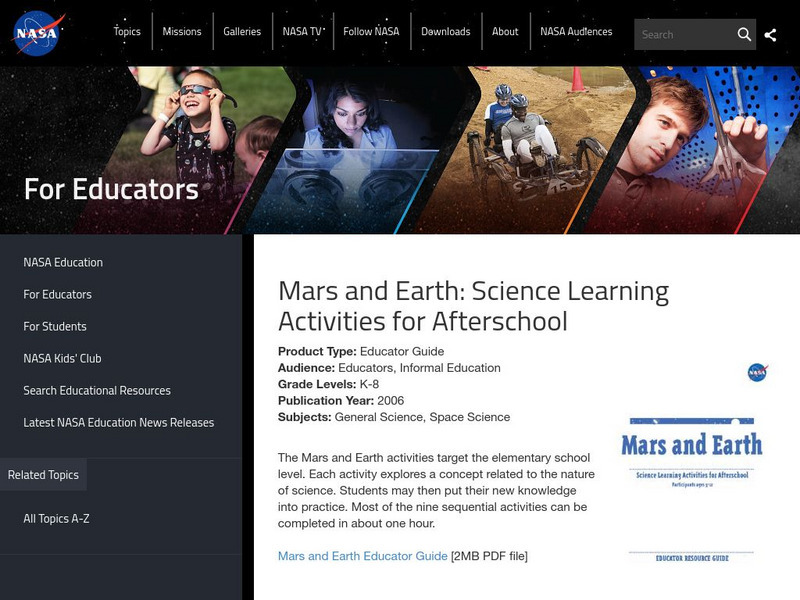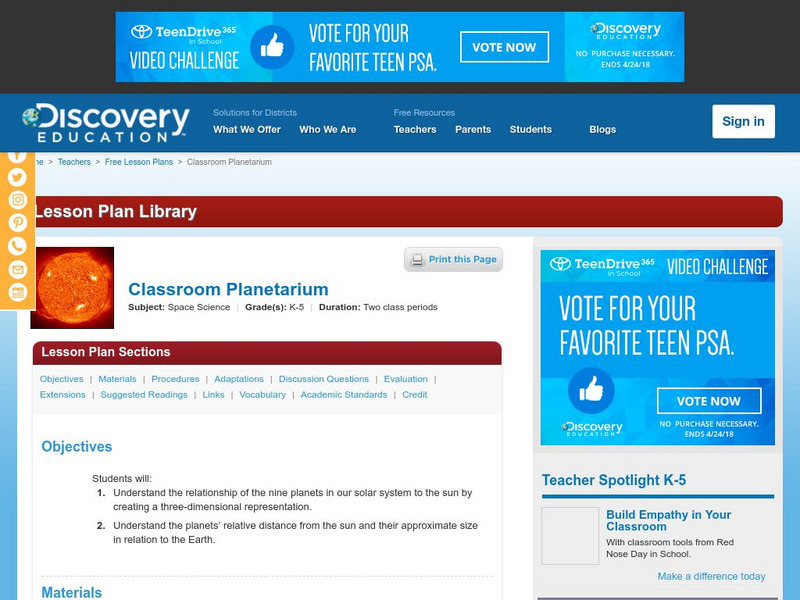Hi, what do you want to do?
Other
Making a Scale Model of the Solar System
For this lesson plan site, students are asked to construct a scale model of the planets to help visualize the relative size of planets and their relative distance from the Sun. Links are provided to the Sun and the planets which contain...
Alabama Learning Exchange
Alex: Inner and Outer Planets of the Solar System
In this science lesson students will work collaboratively to learn and introduce the eight planets, sizes, characteristics, and their order. They will use size comparisons, research a planet, design a poster and create a PowerPoint...
University Corporation for Atmospheric Research
Ucar: Cycles of the Earth System: Earth's Energy Cycle: Albedo
Students experiment and observe how the color of materials that cover the Earth affects the amounts of sunlight our planet absorbs.
South Carolina Educational Television
Know It All: Solar System Simulation
Fourth graders will begin to understand the solar system by using and creating models to demonstrate the layout of the solar System.
The Wonder of Science
The Wonder of Science: Ms Ess1 3: Scale Properties in the Solar System
Work samples, phenomena, assessment templates, and videos that directly address standard MS-ESS1-3: scale properties in the solar system.
Science Education Resource Center at Carleton College
Serc: Creating the Solar System
This two-part lesson begins with a lecture which describes the complex process of creation from molecular cloud to planetesimals to planets to organized solar system. The lecture is followed up with a draw/write activity in which the...
Other
Montana State University: How Much Would You Weigh on Distant Planets?
This resource contains a lesson plan in which students study the effects of gravity on the planets of the Solar System. They will view movies from the lunar Apollo missions, calculate their own weight on other planets, and propose what...
University of Texas at Austin
The University of Texas Mc Donald Observatory: Rock Cycle
This activity combines the concept of Earth's rock cycle with the characteristics of other planets in the solar system.
Other
Simple Science: Planetary Gallery
The innovative resource examines images of the Sun, Moon, Pluto, and all eight planets in the Solar System. Learners calculate the diameter of each object and rank the objects in order of size. The activity has an interactive online...
University of Texas at Austin
The University of Texas Mc Donald Observatory: Solar System Science
Each student becomes the "ambassador" for a planet and prepares by researching their planet, then meets with other ambassadors to form new mini-solar systems.
Science and Mathematics Initiative for Learning Enhancement (SMILE)
Smile: Paper Mache Solar System
This site from the Illinois Institute of Technology provides a set of directions for the creation of a solar system model out of paper mache. Includes orbital distances and planet diameters for the nine planets. Great idea for a student...
Science Education Resource Center at Carleton College
Serc: Know Your Neighbors: Researching the Planets
Students will study planets and moons in our solar system by working online and other resources. This lesson has students working together to generate a spreadsheet of data found. Students will use this information to describe why Earth...
Science Education Resource Center at Carleton College
Serc: Investigating Ordering Planets: Math Connections & Number Sense in Science
In this Solar System Investigate, learners will determine ways to order the planets. Teacher directed inquiry will suggest that they first order the planets according to their distance from the sun. Students will then work on their own...
TeachEngineering
Teach Engineering: The Outer Planets
Students explore the outermost planets of our solar system: Saturn, Uranus and Neptune. They also learn about characteristics of Pluto and its interactions with Neptune. Students learn a little about the history of space travel as well...
Science Education Resource Center at Carleton College
Serc: Geo Logic: Terrestrial and Jovian Planets
Through GEOLogic puzzles, learners are given clues about properties about the terrestrial and Jovian planets respectively, and challenged to match the planet with the correct equatorial radius, mean orbital velocity, and period of rotation.
Alabama Learning Exchange
Alex: Introduction to the Universe
Students use descriptive words to create imagery of the many varieties of objects found in our universe.
Other
Sandburg Center for Sky Awareness: What Are the Shapes of the Planets' Orbits?
In this lesson plan investigation students learn about the shapes of the planetary orbits by experimenting with ellipses of different proportions.
TeachEngineering
Teach Engineering: Our Big Blue Marble
Students are introduced to the fabulous planet on which they live. Even though we spend our entire lives on Earth, we still do not always understand how it fits into the rest of the solar system. Students learn about the Earth's position...
TeachEngineering
Teach Engineering: Not So Lost in Space
Students learn how engineers navigate satellites in orbit around the Earth and on their way to other planets in the solar system. In accompanying activities, they explore how ground-based tracking and onboard measurements are performed....
Alabama Learning Exchange
Alex: If Earth No Longer Existed. . .
Learners will work in cooperative groups to research characteristics of each of the planets in our solar system. Students will design a travel brochure outlining the characteristics of each planet. Each group will make an oral...
Alabama Learning Exchange
Alex: Planetary Cereal Project
This is a project which would be appropriate to use at the end of a lesson about the solar system. Students will decorate an empty cereal box with information and games showing their comprehension of factual information about an assigned...
NASA
Nasa: Mars and Earth: Science Learning Activities for Afterschool
This set of activities teaches students about the big picture of science using Mars as an example: how to collect data, use evidence, and look at models.
Discovery Education
Discovery Education: Classroom Planetarium
Create a classroom model of the solar system while teaching about relative size of all the planets, and each planet's distance from the sun.
National Institute of Educational Technologies and Teacher Training (Spain)
Ministerio De Educacion: La Situacion De La Tierra en El Universo
Throughout this unit you will make an imaginary journey that will transport you from the remotest infinity of the universe around us, to the surface of our planet. During this trip you will see the main features and components of our...







